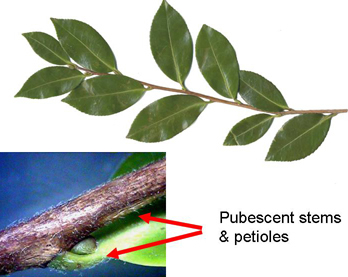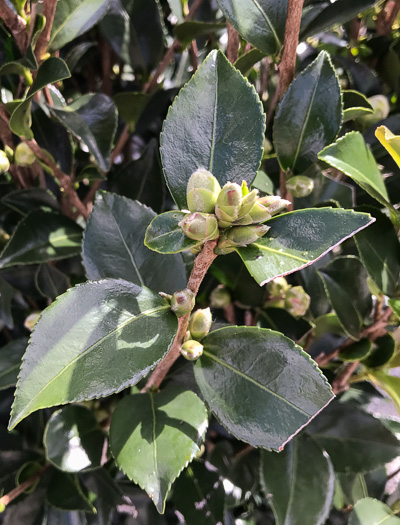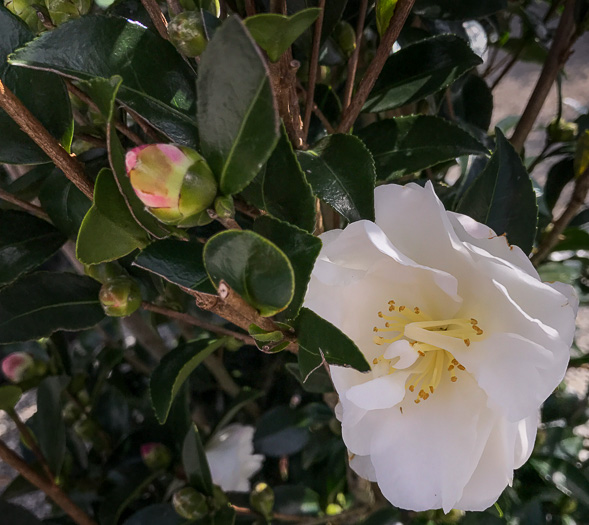Spermatophytes (seed plants): Angiosperms (flowering plants): Eudicots: Core Eudicots: Asterids: Ericales
WEAKLEY'S FLORA OF THE SOUTHEASTERN US (4/14/23):
Camellia sasanqua
FAMILY
Theaceae
Go to FSUS key
Dig deeper at SERNEC, a consortium of southeastern herbaria.
SYNONYMOUS WITH
PLANTS NATIONAL DATABASE:
Camellia sasanqua
FAMILY
Theaceae
SYNONYMOUS WITH Floristic Synthesis of North America. BONAP (Kartesz, 2021)
Camellia sasanqua
SYNONYMOUS WITH Floristic Synthesis of North America (Kartesz, 1999)
Camellia sasanqua
COMMON NAME:
Sasanqua, Sasanqua Camellia
To see larger pictures, click or hover over the thumbnails.
Paul Thompson pstcamellia_sasanqua
September?
Leaves are elliptical with sharply serrate margins. — Clemson Extension
JK Marlow jkm201023_7916
October Greenville County SC
Lichtenfelt Nursery
Flowers are usually smaller (2-3" diam.) and more open than C. japonica, per Manual of Woody Landscape Plants (Dirr, 1975+).
WEAKLEY'S FLORA OF THE SOUTHEASTERN US (4/14/23):
Camellia sasanqua
FAMILY
Theaceae
SYNONYMOUS WITH
PLANTS NATIONAL DATABASE:
Camellia sasanqua
FAMILY
Theaceae
SYNONYMOUS WITH
Floristic Synthesis of North America. BONAP (Kartesz, 2021)
Camellia sasanqua
SYNONYMOUS WITH
Floristic Synthesis of North America (Kartesz, 1999)
Camellia sasanqua
If a search such as "Carex leptalea var. leptalea" doesn't deliver the results you want, try "Carex leptalea".
Or, to minimize chances of a misspelling, try just "Carex le".
Less is more: If "pencil flower" doesn't deliver the results you want, try "pencil".




